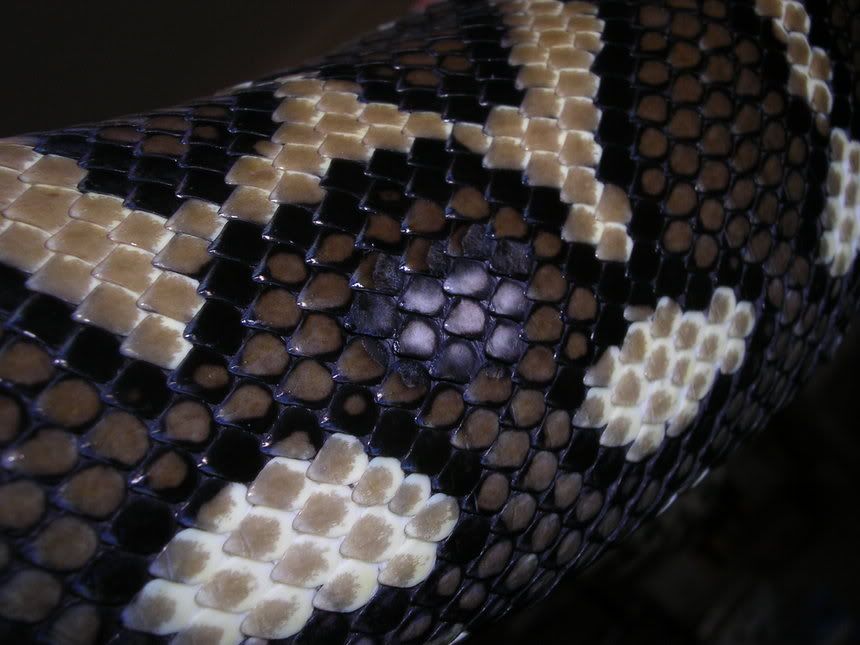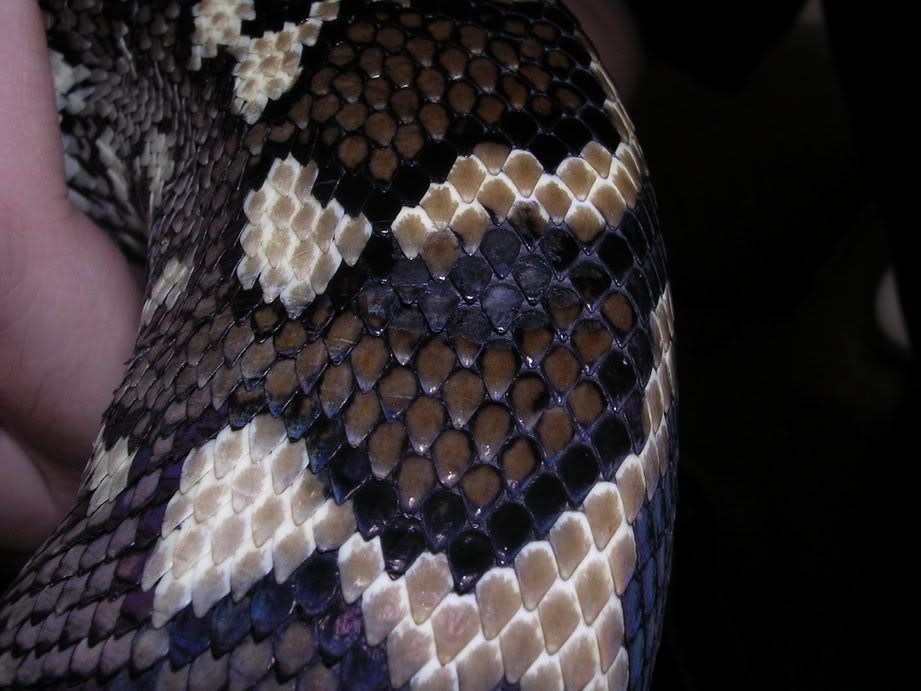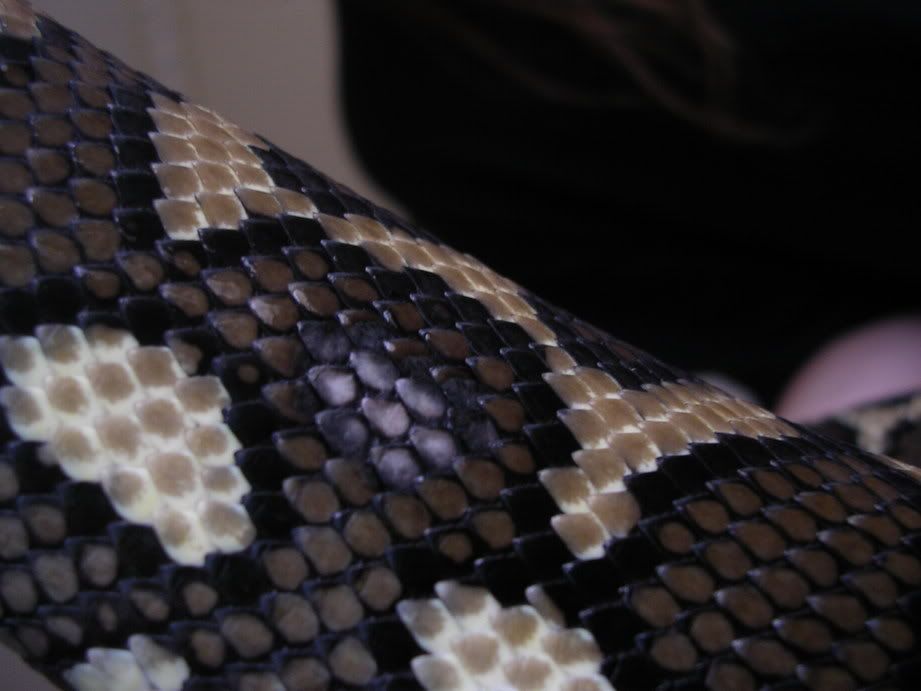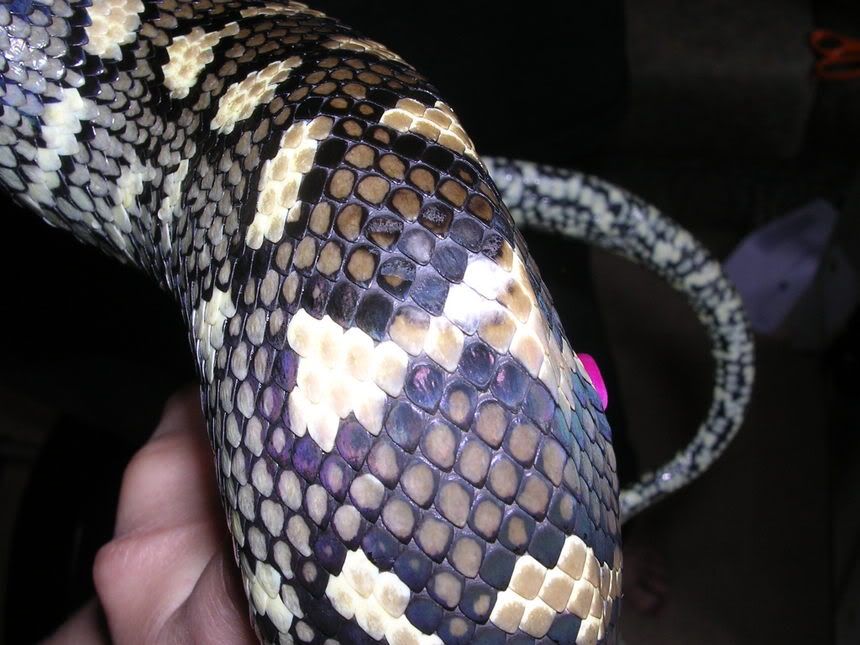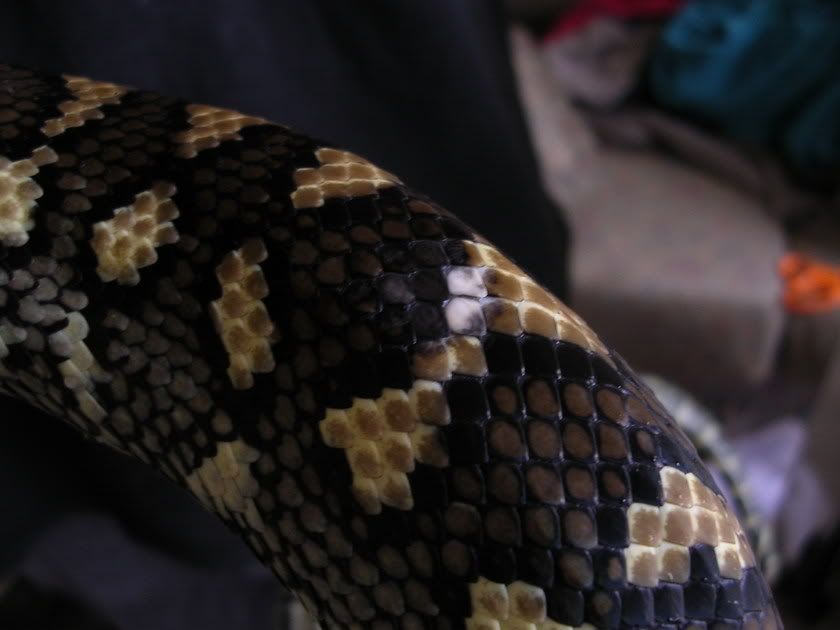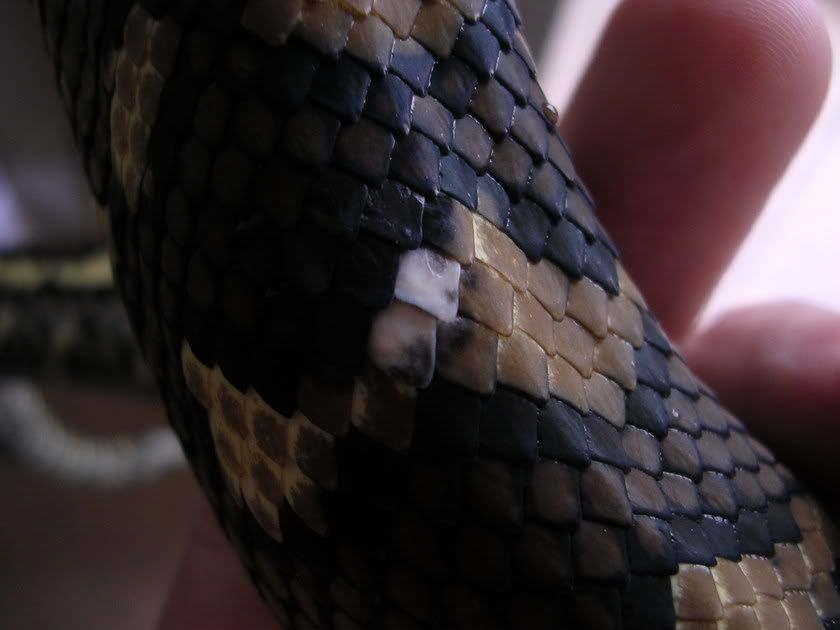Ok kids, I'll try to respond to every question and comment so this will be long lol

Nick, it's hard to tell if these spots are exactly where the injections were given cos no injection sites were marked or anything! All I can tell you is that they seemed (once again I didn't have a fantastic look at positioning etc yesterday) that they were consistent with places that I
would have injected. By that I mean that I would hold him in my hand from underneath and inject a little to the left of the dip in the centre of his back, or his spine. One other interesting thing that clicked last night...when I injected him it would usually come straight up in a little bump under the scales where the fluid was sitting. A few times those lumps didn't go down and he had a few there a while after the course was finished. I'm now thinking that these funky patches (I counted 6 yesterday) are possibly from those lumps.
Yesterday was the 2nd time Nymph shed since he started eating again and both times I've had to help him. The first time he only got about a third of the way down before he gave up...I left him 1-2 days to give him time to do it himself but he just stopped so I soaked him in a tub for a little while and gave him a hand. He's so good...he did this little voodoo thing on me where he jerks his head like he's gonna bite me but doesn't and of course I crap myself lol. But eventually he let me hold on to the skin and he slowly pulled himself out of it. Yesterday was a lot harder...all he got off by himself was the top of his head....I had to do the chin and whole body. He cracked it a bit more this time but at one stage he sat there while I got it off his lips lol. It's strange (and I'm sure I'll get told off for this) but the skin on his chin was very hard to get off where as the skin on his body wasn't even attached...he was just sitting inside it. But anyway, it wasn't until after everything was off that I noticed the patches. I can't see how it could be scale rot but I guess it's always a possibility! I say that cos he's simply on newspaper with a water bowl in the cool end...I wonder if maybe that's why he's not shedding well cos it's not humid enough? But improper shedding can be caused by malnutrition apparently so I'd be guessing that's probably more likely the cause.
Hey Splitmore, I was injecting into different spots each time but I wouldn't be surprised if sometimes I picked him up and thought "that looks like a good spot" and it was one of the ones I'd used before. I also found that they're all in the back 1/2 or 1/3 of the body and I never gave him any injections in his top half. I had a look in 3 different books yesterday and they all said Baytril should be intramuscular...none said sub cut :?. I'm not sure about it being broken down in the kidneys but I don't feel like it's worked...he's no better. Infact he regurgitated a chicken for the first time since having them. I have a feeling the injections haven't fixed the infection that showed up on the blood tests...whether that's because it wasn't given properly or because it's not sensitive to Baytril I don't know. I don't think I should be naming the vet here but I think I should hopefully be able to say that he works every now and then with an extremely good vet (so I've heard) and seeing that he has access to him I kinda assumed that the whole "sub cut" thing would have come indirectly from him :?.
Allo Dorian, not sure if it could be a burn...he doesn't do a lot with himself these days and he's never been a climber...I guess it's always a possibility?
Hixbiscus, will definitely call a few vets to see if they inject under the skin or IM. Might even call some interstate ones seeing as we don't have a lot of reptile vets here lol.
Stevie, just to sound like a doofus, how do they get scale damage before shedding? As in what actually happens for them to become damaged?
Browneye, I honestly don't know if they have had any effect...I assumed (and I could well be wrong) that the infection would be in his stomach seeing as it's so inflamed and I believe infection can occur in a very inflamed area. If they are connected then it hasn't worked cos his lump is as big as ever.
Hey maybe he's turning albino Philly lol

The problem is usually aggravated by the medication being given too close to skin tissue or leaking out through the injection site.
Thanks Wrasse, that's actually really helpful as a few times a little bit of it leaked out :?. You have to twist the needle until you feel resistance before removing it and a few times no matter how long I twisted the damn thing there was no resistance there and a bit came back out. That would make a lot of sense as to why those patches are there. He actually was extremely good when giving them as he has been with everything else. A lot of the time he didn't even flinch but the worst he ever did was jump a bit when I injected it...he's such a good snake

. Should I definitely be treating these areas or do you think I could just leave them (and him) alone? He's been through SO much and I try to bother him as little as possible these days.
Peter, I was a tad annoyed when I found these yesterday hence the whole "abuse the vet" thing lol. It's just that he assured me that it wouldn't be a problem and if these are caused by Baytril he was wrong. I understand side effects and risks...if you know about them then you can choose to take them. I'm also annoyed that if they were ineffective because of being injected the wrong way then the poor bugger had 21 useless (and possible painful) injections :evil:
Rockman, there's a MASSIVE story behind this snake (longer than this post :lol

but basically he regurgitated rats and mice, then went off food, then started eating chickens. He has a big lump in his stomach which is actually his stomach wall which is very inflamed and blood tests said he had an infection somewhere. He doesn't move around a lot but he's been a bit better since we gave him fluids a while back. He has a bad attitude in his cage sometimes but once out you can do anything to him and he won't bite. I don't really know about a black smudge...don't think so.
Hey moose I think we're running out of vets lol.
Lol thanks Shane

Thanx for all the advice guys...I'll call some vets tomorrow and see what they say about IM vs sub-cut. I'm not sure which vet to go to now if we change cos we're running out lol. Will let ya know how I go
